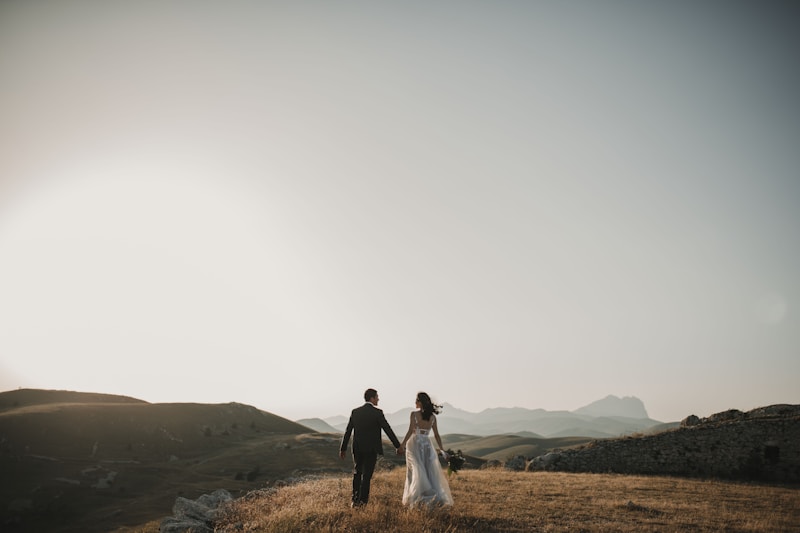The History and Evolution of Wedding Dress Trains
The History and Evolution of Wedding Dress Trains
Throughout the ages, the wedding dress has been one of the most significant symbols of love and commitment. Among the various elements that contribute to the beauty and symbolism of bridal attire, the train of a wedding dress holds a unique place. In this comprehensive article, we will explore the history and evolution of wedding dress trains, tracing their journey from simple collections of fabric to the elaborate designs we see today. This exploration will reveal not just the aesthetic changes over time, but also the socio-cultural influences impacting bridal fashion.
What is a Wedding Dress Train?
A wedding dress train is a piece of fabric that extends from the back of the gown. It is typically designed to trail behind the bride as she walks down the aisle. The length and style of the train can vary significantly, and they serve both functional and decorative purposes, reflecting the bride's personal style.
Historical Origins of Wedding Dress Trains
To understand the evolution of wedding dress trains, we must look back at their historical origins. The concept of wedding attire dates back to ancient civilizations. However, the train as we know it today began to gain prominence during the Middle Ages.
| Era | Train Features | Significance |
| Middle Ages | Simple, short trains | Signified nobility |
| Renaissance | Longer, intricate trains | Showed wealth and status |
| Victorian Era | Exaggerated, ornate trains | Fashion statement |
| Modern Era | Diverse styles and lengths | Personal expression |
During the Middle Ages, the length of a bride's train often indicated her social status. Royal and noble brides would sport longer trains, which demonstrated their wealth and prestige. As we moved into the Renaissance period, dresses became more elaborate, with longer trains adorned with intricate embroidery. This period emphasized opulence, and the train became a crucial part of a bride's overall look.
The Victorian Influence
The Victorian era saw a significant transformation in wedding fashion, influenced by Queen Victoria herself, who popularized wearing white for weddings. Brides began to embrace trains that were often exaggerated in size, adorned with lace and embroidery, serving as a crucial fashion statement. The trains of this time became symbols of elegance and societal status, with many brides requiring assistance to carry and manage their elaborate gowns.
20th Century: The Shift Towards Personalization
Entering the 20th century, wedding dress designs began to reflect more individual styles than collective norms. The introduction of ready-to-wear Wedding dresses led to an increase in accessibility, allowing brides to choose trains that matched their personal aesthetic. The 1920s flapper style, dominated by shorter hemlines, ushered in a period where wedding dress trains began to shorten, aligning more with modern fashion trends.

The mid-20th century saw the return of longer trains, influenced by Hollywood glamor. Designers introduced celebrity styles that set trends for brides. This evolution showcased dramatic trains, with styles such as the 'cathedral train' becoming popular. Cathedral trains, known for their extended lengths that could measure up to six feet, became synonymous with grand and formal weddings.
Contemporary Trends in Wedding Dress Trains
Today, the wedding dress train continues to evolve, blending traditional and modern elements. Designers are increasingly employing innovative materials and techniques to create distinct styles that offer versatility and comfort. Wedding dress trains now come in various lengths, including:
- Short Train: Just a few inches long, perfect for less formal weddings.
- Chapel Train: Just slightly longer than a short train, ideal for church weddings.
- Cathedral Train: A dramatic option for formal ceremonies, usually extending several feet behind the bride.
- Royal Train: An extravagant version popularized by royals, which can measure significantly longer than the cathedral train.
In addition to length, the style and materials used also differ significantly between modern designs. For instance, lace overlays, appliqués, and even sheer panels have become increasingly popular, adding layers of depth and texture to Wedding dresses.
Choosing the Right Train for Your Wedding Dress
When selecting a train for your wedding gown, consider a few key factors:
- Wedding Venue: Consider the location of your wedding. For outdoor settings, a short or no train may be more practical, while formal venues can accommodate longer styles.
- Wedding Style: Align your dress train with the theme of your wedding, whether it's rustic, vintage, or contemporary.
- Personal Comfort: Ensure that you're comfortable moving and dancing in your gown for the entirety of your special day.
Final Thoughts
The train of a wedding dress has undergone significant transformations throughout history, from the simple designs of the Middle Ages to the personalized styles of today. Choosing the right train is not just a matter of aesthetics, but also of practical considerations. Trends in wedding dress trains will undoubtedly continue to evolve as we move forward, but their meaning—symbolizing love, status, and personal style—will forever remain at the forefront of bridal fashion.
Remember to take your time selecting a dress and its train, considering how they reflect your personality and the atmosphere of your wedding. Happy planning, and may your wedding day be filled with love and joy!
